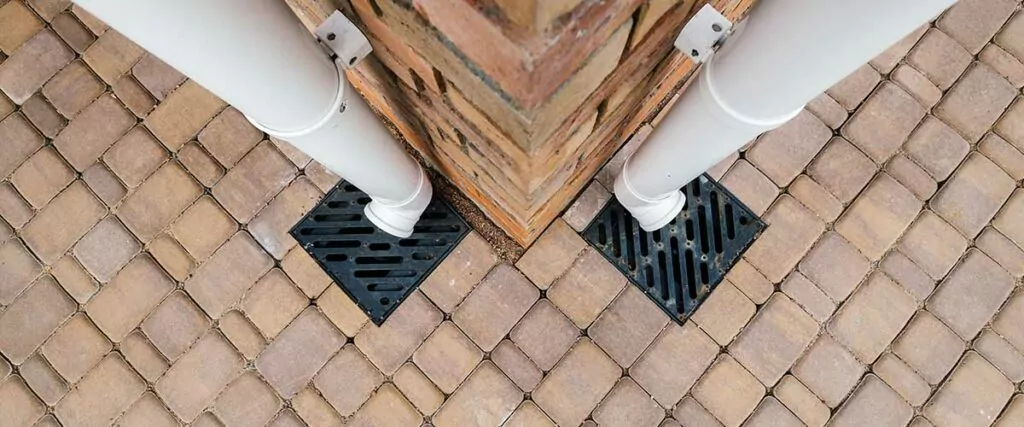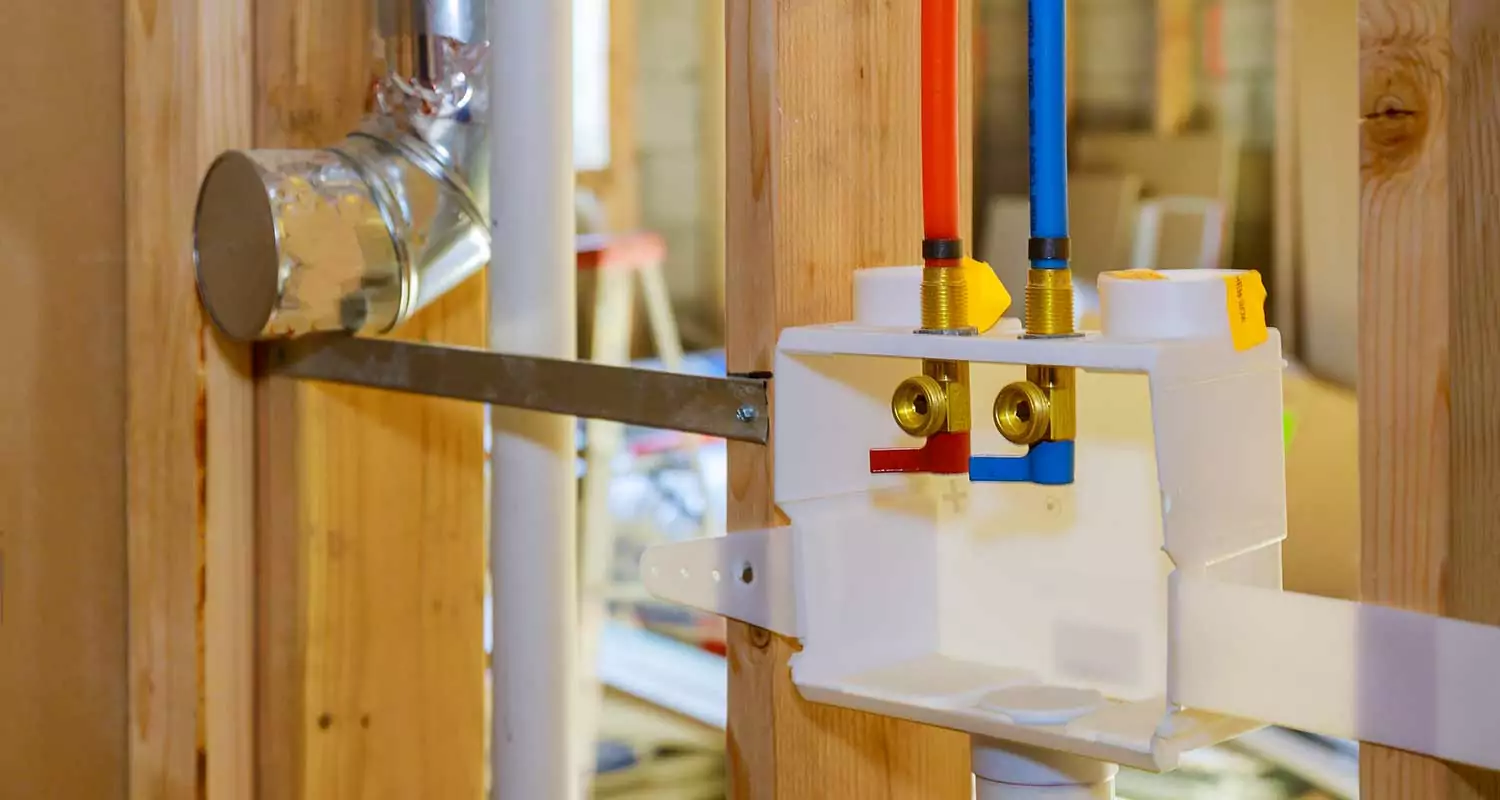Ever wondered how water reaches your faucet or waste leaves your house? Plumbing is vital for clean drinking water. There are three main types of plumbing systems. Let’s look at these systems that ensure our homes run smoothly.
So, What are 3 types of plumbing systems? The three types of systems are potable water, sanitary drainage, and stormwater drainage. They each have a specific role in our water supply. Knowing about them helps homeowners and businesses make smart choices about plumbing.
Key Takeaways:
- Types of plumbing systems consist of potable water, sanitary drainage, and stormwater drainage.
- Potable plumbing systems supply clean drinking water through pipes and valves.
- Sanitary drainage systems remove wastewater from toilets, showers, and more.
- Stormwater drainage systems manage excess rainwater and snowmelt.
- Maintaining your plumbing system is crucial to prevent costly repairs and damage.
Potable Plumbing System
The potable water system is vital for clean drinking water in buildings. It uses pipes and valves to bring water from local mains to faucets. The system includes straight pipes, elbows, and various valves for water control.
Its main goal is to provide water that’s safe to drink. Potable water meets all quality standards necessary for health. So, this plumbing system is essential for any building’s infrastructure.
Now, let’s look more closely at the system’s parts:
Plumbing Pipes
Plumbing pipes in this system handle high pressure and efficiently move water. They are made from materials like copper, PVC, and PEX. These materials are chosen for their strength and resistance to corrosion.
Valves
Valves play a key role in the system by managing water flow. Brass and gate valves are often used. They make it easy to start or stop water, which is very useful in emergencies or for saving water.
Water Meter
The water meter is another crucial part. It tracks water use and helps in finding leaks. By monitoring water use, it aids in efficient water management and spotting consumption irregularities.
Shut-Off Valve
For emergencies or repairs, there’s a shut-off valve. It can rapidly halt water flow, protecting against leaks or water damage. This valve is an important safety feature in the plumbing system.
Sanitary Plumbing Systems

The sanitary drainage system, an essential component of plumbing systems in buildings. It removes wastewater from toilets, showers, and kitchens. By doing so, it keeps buildings clean and hygienic. The system uses a series of drain pipes for wastewater collection.
There are sanitary drainage systems that work differently. Some use gravity, and others might use pumps or vacuums. Gravity lets wastewater flow naturally. Pumps push it through the system. Vacuums suck the wastewater out.
The main part of this system is the drain pipes. They’re made from strong materials like PVC or cast iron. These materials can handle wastewater without damage. The pipes carry waste to the sewer line or septic system.
A well-kept sanitary plumbing system is key for a clean building. It safely gets rid of wastewater. This stops bad smells, bacteria, and health risks.
| Advantages of a Sanitary Plumbing System | Disadvantages of a Sanitary Plumbing System |
|---|---|
| – Efficient removal of wastewater | – Potential for blockages and clogs |
| – Maintains cleanliness and hygiene | – Risk of leaks and water damage |
| – Prevents foul odors and bacteria buildup | – Requires regular maintenance and inspections |
| – Proper disposal of wastewater | – Dependence on community sewer line |
It’s important to keep the system in good condition. Get a plumber to check the system regularly. They can find and fix problems like leaks or blockages fast. Regular checks prevent high repair costs and keep the wastewater system running smoothly.
Stormwater Plumbing Systems

The stormwater drainage system keeps our properties safe and efficient. It handles extra rainwater and melting snow, avoiding damage and water troubles. The system includes gutters, rain barrels, and sump pumps to manage water.
Gutters
Gutters are vital in keeping water away from your home’s base. They catch roof water and channel it to the ground. This action stops water from entering your house or gathering at its base, preventing expensive harm. It’s key to regularly clean them to avoid clogs.
Rain Barrels
Rain barrels are a smart add-on for your stormwater system. They save water from gutters for future use, like for your garden or cleaning outdoors. This saves clean water, cuts your bills, and is good for the planet. They’re also simple to set up.
Sump Pumps
For homes facing flood risks or too much underground water, sump pumps are essential. They move water from low areas, like basements, away from your house. When water hits a certain level, these pumps kick in, keeping your place and things dry. Remember to maintain them for reliability during storms.
Adding gutters, barrels, and pumps to your stormwater system helps manage overflow. Keeping these parts in check stops property damage and other problems. Regular check-ups are crucial for everything to work right.
Components Function Maintenance Gutters Direct rainwater away from the foundation Clean debris regularly to prevent clogging Rain Barrels Collect and store rainwater for later use Empty and clean periodically to avoid stagnation and debris buildup Sump Pumps Remove excess water from basements or crawl spaces Inspect and test regularly to ensure proper functioning
Importance of Plumbing Maintenance
Keeping your plumbing systems in good shape is key to their performance. It avoids expensive fixes or having to replace parts. By getting a skilled plumber to check and maintain your system, you can spot and solve issues early. This includes looking for leaks, blockages, and making sure water flows well.
Regular plumbing upkeep is crucial for your property’s waste system. It keeps wastewater moving smoothly. Over time, things like grease and minerals may clog pipes. Regular checks prevent these problems, ensuring water moves without issue. This reduces chances of backup or flooding.
It’s important for safe drinking water, too. Leaks can waste water and threaten its quality. If not found, leaks might let harmful substances into your drinking water. By fixing leaks and insulating pipes right, you keep your water clean and safe.
Ignoring your plumbing system can also hurt your property. For instance, leaky or burst pipes can damage walls, floors, and ceilings. This could lead to mold, rot, and a weaker structure. Regular maintenance finds problems early and avoids serious damage. This saves time and money in repairs.
To sum up, investing in plumbing care is smart for your building’s long-term health. It helps avoid costly repairs and keeps your water system reliable. It also protects your property from damage. Remember the value of frequent plumbing checks. Always call a professional plumber to keep your system running well.
Wrapping it up
The 3 different types of Plumbing systems are an important factor in both homes and businesses. They include potable plumbing system, sanitary drainage system, and stormwater systems for a well-run plumbing setup. These plumbing systems ensure you have clean water, remove wastewater, and manage rainwater.
Professional plumbers play a key role in keeping your plumbing in top shape. They have the skills and tools for installation, upkeep, and fixes. With a trusted plumber, your system gets fixed fast. This prevents water harm and other serious problems.
Keeping your plumbing well-maintained is vital. Pros can check your system and fix small issues early. This saves you money and extends your system’s life. Regular care means a safer, uninterrupted water source for your place.
To sum up, knowing your plumbing and having pros you can count on matters a lot. Their help ensures everything works right. This way, you avoid expensive fixes and enjoy reliable water use.
What you should do next
If you’re facing any piping issues or have questions regarding your home’s plumbing system, consider reaching out to Chambliss Plumbing Company.
As a trusted local provider, we have been delivering quality residential plumbing services in San Antonio for over 30 years. Our experienced team can assist with a wide range of San Antonio plumbing needs, ensuring your home remains comfortable and efficient.
For more information you can give us a call at (210) 490-7910 or fill out our online form and we will get back to you at our earliest convenience.
Related articles:
- What’s the difference between Residential and Commercial Plumbing?
- Understanding What is Residential Plumbing
FAQs
What are the three basic piping systems?
The three fundamental piping systems include the water supply system, the drainage system, and the vent system. Each plays a crucial role in ensuring efficient water delivery, waste removal, and the prevention of harmful gas build-up in residential and commercial buildings.
What are the three categories of a house plumbing system?
House plumbing systems can be divided into three main categories: the supply system, which brings fresh water in; the drainage system, which removes waste water; and the vent system, which ensures air pressure within the pipes is balanced, preventing toxic gas accumulation.
What is the main system in plumbing?
The main system in plumbing is typically considered to be the water supply system. This system is key for distributing fresh, potable water to various parts of a building, including faucets, showers, and appliances, and is essential for daily operations and hygiene.
What are the 2 main plumbing subsystems in a normal home?
In a standard home, the two primary plumbing subsystems are the water supply system and the drainage system. The water supply system is responsible for bringing clean water into the home, while the drainage system focuses on removing wastewater efficiently, ensuring a healthy living environment.
